Click on images to enlarge

habit (Photo: Sheldon Navie)
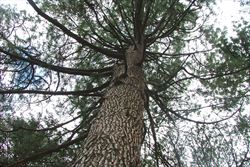
habit from below (Photo: Sheldon Navie)
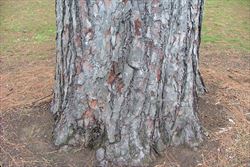
base of main trunk (Photo: Sheldon Navie)

close-up of scaly bark (Photo: Sheldon Navie)
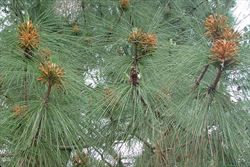
branches with very long leaves and clusters of male cones (Photo: Sheldon Navie)

close-up of young leaf shoots subtended by brown reflexed scales with white feathery margins (Photo: Sheldon Navie)
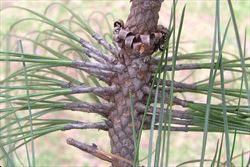
close-up of stem and older leaves, mostly grouped in threes with their bases enclosed in sheaths (Photo: Sheldon Navie)

close-up of elongated male cones (Photo: Sheldon Navie)
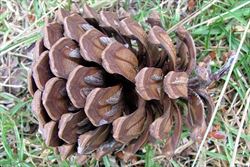
mature female cone, showing the tips of the winged seeds (Photo: Sheldon Navie)
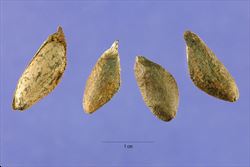
close-up of seeds after their wings have been removed (Photo: Steve Hurst at USDA PLANTS Database)
Scientific Name
Pinus canariensis C. Sm.
Family
Pinaceae
Common Names
Canary Island pine, canary pine
Origin
Native to the Canary Islands.
Naturalised Distribution
This species is becoming naturalised in the temperate regions of southern Australia, mainly close to forestry plantations. It is currently regarded as being naturalised in south-eastern South Australia and sparingly naturalised in Victoria and south-western Western Australia.
Notes
Canary Island pine (Pinus canariensis) is regarded as a minor environmental weed in Victoria and as a potential environmental weed or "sleeper weed" in other parts of southern Australia.
This species has been cultivated in parks and gardens, as an ornamental, and in forestry plantations for its timber. It was first recorded naturalising at Geelong, in Victoria, in 1974. Localised naturalised populations have since been recorded at other locations in this state (e.g. at Jolimont in Melbourne, at Rockbank and between Dunkeld and Lake Bolac). It has also escaped cultivation in several locations in south-eastern South Australia and is spreading from forestry plantations in south-western Western Australia.

